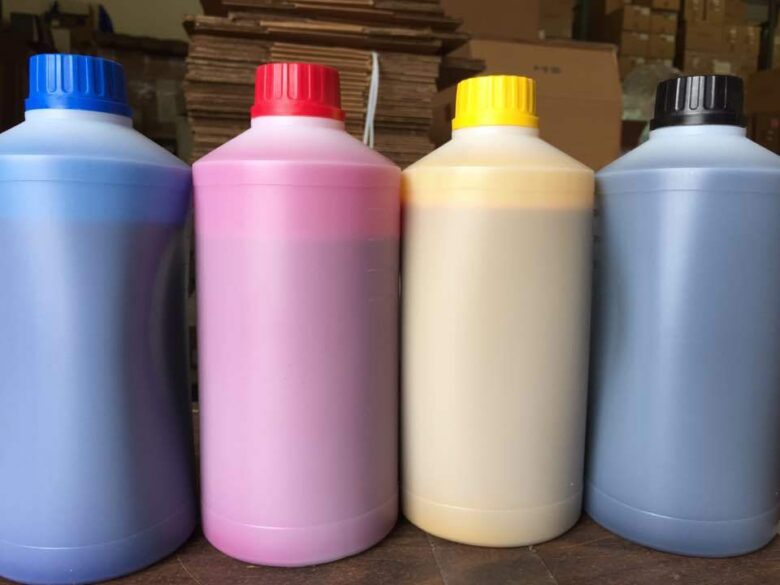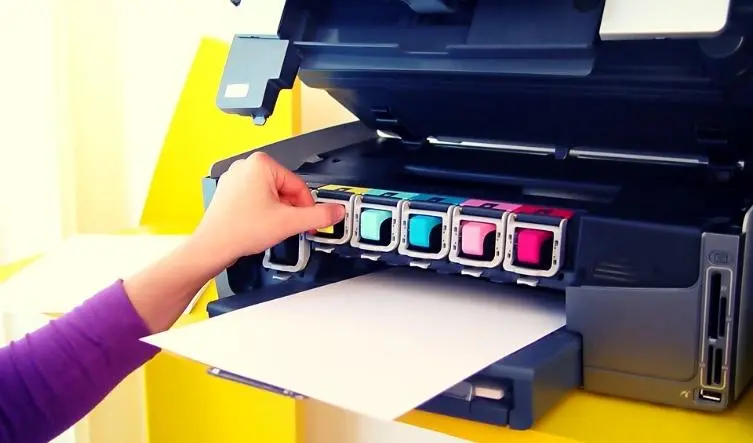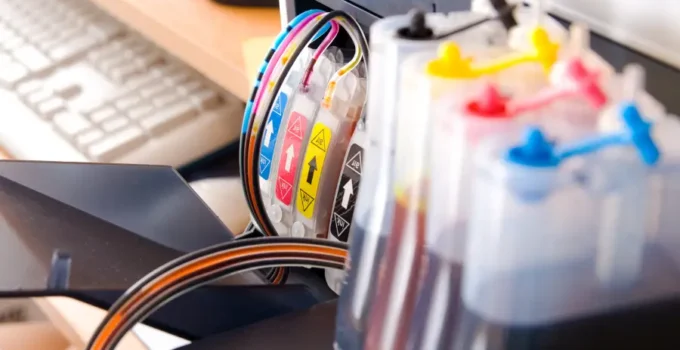Welcome to our latest blog post, where we’ll be answering a question that many of you may have wondered about: Can You Use Sublimation Ink for Regular Printing? If you’re like most people, then you might not know the answer right off the bat. That’s why we’ve put together this informative article to help clear up any confusion and give you all the information you need. So whether you’re a seasoned printer or just starting out in the industry, read on to find out more about sublimation ink and how it can work for regular printing!
What is sublimation ink?

Source: facebook.com
Sublimation ink is a type of ink used for dye-sublimation printing, which is a process that involves printing designs onto transfer paper and then transferring the design onto a substrate (such as a t-shirt or mug) using heat and pressure. It is made up of dye particles that are suspended in a liquid carrier, which is typically water-based. When the ink is heated, the dye particles are converted into a gas, which bonds with the polyester fibers in the substrate to create a vibrant, long-lasting image.
What is regular ink?
Regular ink, also known as pigment ink or dye ink, is the type of ink used in traditional inkjet printers. This ink is made up of tiny particles of pigment or dye that are suspended in a liquid carrier, which can be water-based or oil-based. When the ink is applied to paper, the liquid carrier evaporates, leaving behind the pigment or dye particles on the surface of the paper.
Can sublimation ink be used for regular printing?
While sublimation ink can be used for printing onto certain types of paper, it is not recommended for use in traditional inkjet printers. There are several reasons for this:
- Inkjet printers are designed to work with regular ink, not sublimation ink. The printing process for sublimation ink requires a different type of printer that can handle the heat and pressure needed to transfer the design onto the substrate. Using sublimation ink in a regular inkjet printer can result in poor print quality and damage to the printer.
- Sublimation ink is designed to bond with polyester fibers, not paper. When sublimation ink is applied to paper, the dye particles will not bond with the paper fibers in the same way as they would with polyester, resulting in a lower quality print.
- It is not as durable as regular ink. While sublimation ink is designed to be long-lasting on polyester fabrics, it is not as durable on paper. Over time, sublimation ink can fade or discolor, especially if exposed to sunlight or other environmental factors.
- Sublimation ink is more expensive than regular ink. Sublimation ink is typically more expensive than regular ink, so using it for regular printing would be an unnecessary expense.
While sublimation ink is a popular choice for printing onto fabrics and other materials, it is not recommended for use in traditional inkjet printers for regular printing. The printing process for sublimation ink requires a different type of printer that can handle the heat and pressure needed to transfer the design onto the substrate, and sublimation ink is not as durable on paper as regular ink. If you are looking to print onto paper, it is recommended that you use regular ink designed for use in inkjet printers.
What are the benefits of using sublimation ink?

Source: pinterest.com
There are many benefits of using sublimation ink for regular printing, including:
- Vibrant, full-color designs: The unique printing process of sublimation ink allows for vibrant, full-color designs that are fade resistant and long lasting.
- Durability: Sublimation ink is transferred to the substrate using heat and pressure, which makes it more durable than traditional inks. Additionally, the prints are less likely to crack or peel over time.
- Cost-effectiveness: Sublimation ink is more cost-effective than traditional inks because it doesn’t require additional materials like screens or films. Additionally, there is less waste with sublimation ink since any unused portions can be reused.
Does sublimation ink work with all printers?
Sublimation ink is specifically designed to be used with sublimation printers. These printers use heat to transfer the ink onto substrate, so regular printers will not work with sublimation ink.
How do you use sublimation ink for printing?

Source: youtube.com
Sublimation ink is designed to be used with a sublimation printer. A sublimation printer uses heat to transfer the ink onto the substrate. The most common substrates for sublimation are polyester fabrics and polymer-coated metals. However, you can also use sublimation on ceramic tiles, glass, and certain plastics.
To use sublimation ink for printing, you will need to purchase a sublimation printer and some sublimation paper. Sublimation paper is specially coated to allow the ink to transfer onto the substrate. Once you have your printer and paper, you can start printing!
If you want to print on fabric, you will need to pre-heat the fabric before printing. This helps the ink adhere to the fabric better. You can either use an iron or a heat press to pre-heat the fabric. If you are using a heat press, make sure that the temperature is set correctly or you could damage your fabric.
Once the fabric is pre-heated, load it into your printer and print your design. If you are using an iron, wait for the design to cool completely before wearing it or washing it.
Are there any drawbacks to using sublimation ink?
Yes, there are some drawbacks to using sublimation ink for regular printing. One of the biggest drawbacks is that sublimation ink is not compatible with all types of paper. In fact, it is only compatible with a few types of paper that have a special coating. This means that if you want to use sublimation ink for your regular printing needs, you will likely have to pay more for the special coated paper. Additionally, it can be difficult to work with and may require some trial and error before you get the hang of it.
Conclusion
Sublimation ink is a great option for regular printing, offering vivid and vibrant colors with excellent durability. However, it’s important to understand that there are some limitations in terms of materials compatible with sublimation ink, so you may need to experiment with different substrates before settling on one that works best. With the right knowledge and experience, using sublimation ink can be an effective way to produce stunning prints that will last for years.




